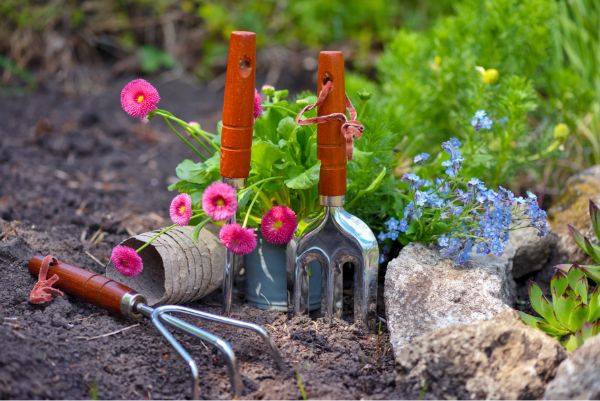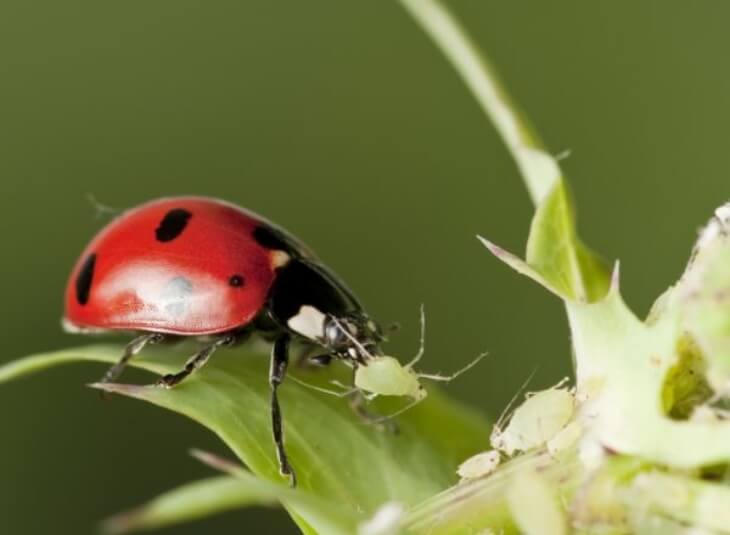News & Articles
What Is Integrated Pest Management (IPM)?
Posted on May 5, 2021

When you suspect you have a pest problem in your garden, options can feel limiting. You might not want to use chemical sprays or feel comfortable setting up traps. With that said, one universal strategy isn’t for everyone, and that’s okay! Integrated pest management (IPM) might be for you. First, we’ll define what it is. Then, we’ll outline each type to help you find the best pest control for you.
What Is Integrated Pest Management (IPM)?
Integrated pest management is a type of pest control that approaches pest control from an effective, long-term prevention stance. This science-based strategy combines many methods to reduce pests, including cultural, physical, biological, and chemical measures. We list the various techniques IPM uses in more detail below.
What Is A Pest?
As a refresher, let’s talk about what a pest is. Pests include animals, insects, or plants. When they begin disrupting and damaging the area, they are a pest. Danger to other plants, animals, or human life can make a species a pest. Most pests are annoying and can have you running to the local store for solutions.
Because of IPM’s broad approach, we can use it to address a wide variety of concerns. In other words, IPM doesn’t focus just on the pest itself. Rather, we see the big picture by examining the surrounding ecosystem.
POne great advantage of IPM is risk reduction. IPM factors in overall health, economic and environmental risks to achieve this. Your garden has a complex ecosystem, and disrupting it could do more harm than good. Understanding which bugs and plants are actually bad is the first key step. This will help you identify how to get rid of the pest while protecting the rest of your garden.

Identifying Pests
First, be sure you understand the current pest problem. Not all bugs are bad! For example, ladybugs are vital to the overall health of your garden. Once you have identified the pest, keep track of and monitor activity. To what extent has this pest taken over? How fast are they reproducing? How much damage are they causing? These are some good questions to keep in mind when you begin planning your pest control. Next, we outline each IPM method to help you better prepare your action plan.
Cultural Methods
Cultural methods include the environment in which the pest needs to survive. This includes water, shelter, and food. By preventing the chance for the pests to flourish in your yard or home, we can minimize the damage. Prevention of pests might look like removing damp wood to prevent carpenter ants. For plants, you can look into pest-resistant varieties.
Physical Methods
The next step includes physically preventing or removing the pest. This one sounds more like what traditional pest control entails. You might set up traps or physical barriers. Netting and fencing can protect certain plants. Depending on what type of pest you’re dealing with, physical prevention or removal can be an option. Physical removal and prevention can also be used in conjunction with other methods.
Biological Methods
Biological Methods for IPM means using mother nature to reduce pests. Predators and parasites target and reduce the pest population. The goal is to introduce and promote beneficial insects to adapt and keep future pests away. This one can be trickier for your everyday backyard gardener. However, it is possible to purchase and release predator insects in your garden. For example, green lacewings can effectively reduce an aphid infestation.
Another approach includes attracting good bugs into your garden. Introduce plants they’re attracted to. This will help encourage reproduction. Therefore, you can let mother nature do the rest. Biological methods are one of the most difficult methods to DIY. Contacting a professional pest control company about whether or not this is the right choice for you is essential, so you do not damage your local ecosystem.

Chemical Methods
The last IPM control method includes chemicals. This means using chemicals in the plant area of concern. You can use pesticides or insecticides for this one. However, not all chemicals are made the same. Some require regular use, and others can be toxic. You should block off the area to prevent children or pets from entering. Always carefully read the product label for proper handling and storing.
You can also try insect pheromones, attractants, and anti-feeding agents. An exterminator will know which chemicals are best for you.
Do I Need IPM?
IPM offers a variety of methods to minimize risk and damage. Not one method will always be effective for every problem. This is why using multiple approaches brings about more benefits. As mentioned earlier, we can use IPM as a long-term, sustainable option. Proper identification and prevention are the first steps you’ll take. Remember to consider each IPM method. These four steps will help protect your garden. Additionally, it will reduce the risk of pest re-entry.
If you’re still unsure whether IPM is right for you, talk to a pest control specialist. Ask them about the options available to you. They can help you come up with a personalized plan.
As a family-owned Calgary business, we know pests at Martin’s Pest Control. We take pride in our trusted relationship with our community. Contact us today to request a free quote and let us handle the rest.
Recent Posts
- Bug Free Backyard BBQ Tips - 7 ways to Pest-Proof Your Home
- Ants Invade: Understanding Ant Infestations and Effective Pest Control
- Boxelder Bug: The Unwanted Visitors
- European Crane Fly Fun Facts
- Winter Ant Invasion
- DIY Pest Control Fails! Certainly Call the Experts
- Easy Top Notch Seasonal Pest Control Tips
- 10 Common Household Pests : When to Call a Professional
- Simple Mouse Control Techniques